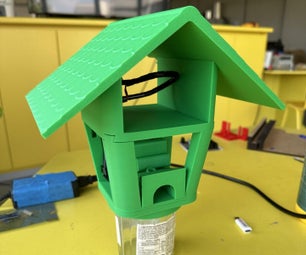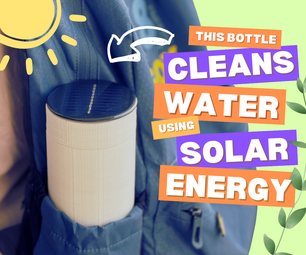Introduction: Voltage Doubler for Wind Generators
I built this circuit in hopes that the wind generator i'm working on will have less rpm's to spin to get the voltage I need to charge batteries or run lights on wind that blows. It's a really simple circuit that has only a few components, mainly a rectifier to convert the a/c voltage my stepper motor makes to dc voltage, and some capacitors to boost the voltage and stabilize it on the output.
I bought this stepper motor at the scrap yard here in Vegas for $3. ( it can be seen further down the page) It's about the size of a small car starter and produces 2 phase a/c output. Just giving it a quick spin, each phase put out about 5 volts a/c. I put a 12 volt LED on one phase and gave it a spin and it barely lit up with the low a/c voltage. I found out I can put the 2 phases in series and double my output there so in doing that I got about 8 - 10 volts a/c with some finger spinning. so putting that through a rectifier as is would give me about that in dc, maybe a little less which is ok probably but we can do better.
Step 1: Supplies
All that's needed to make this voltage doubling circuit is a rectifier (full wave preferred). I got mine from a burnt out computer power supply. The two in the picture came from the same power supply and the specs rate them at 6 amps. I don't anticipate the generator making that kind of output but who knows and we'll see. haha. I also got some caps of a good capacitance.
parts needed:
1 rectifier
3 2200mfd caps 35 volt rated
1 3300 mfd cap 35 volt rateds
1 breadboard
some wires
solder iron and solder
Step 2: Assembly
Placement of the components is key to an easy assembly. I didn't want any jumper wires or massive solder lines so I used the long leads of the caps for all the underneath connections and it worked out great. I put the rectifier in the middle more or less and I wanted the caps on the outside.
Step 3: Follow Schematic and Solder
The two blue caps are for the a/c input and are the 2200mfd's. They are polarized but since its a/c voltage I don't think it matters too much. I ran this through the multisim circuit software and it didn't matter so I think i'm ok. The caps on the a/c side are in series with the circuit, meaning one cap per wire. so solder one wire to a leg of the cap and then solder the other leg to the rectifier a/c input leg. Repeat for the other cap to the other a/c leg of the rectifier.
If you just had the circuit done from this point and put the output wires on the rectifier it would be the double voltage yes, and it would probably work BUT, it wont be a true horizontal dc voltage wave. At this point its a half wave going from 0 - 24 volts and repeating on the o-scope. This is why I added the caps on the output. They make the wave a nice straight dc line. I put the two caps (2200 and 3300 mfd's) in parallel to give me 5500mfd's. It's up to you what capacity you want here, I figure the more the better. anyways, solder them in parallel to each other then solder them in parallel to the rectifier meaning all positives to positives and all negatives to negatives. lastly solder a positive wire to the positive lead of the cap and a negative to the negative lead. Make sure you verify your work after you finish to make sure no leads are crossed and no polarities on the output dc side are inverted.
Step 4: Testing Time
Once its done and checked for accuracy, go test'er out! This is the stepper motor i'm going to use this circuit on. It's a 1.8* 2.8 volt 2 phase stepper motor. I put the phases in series so it is only a two wire a/c output instead of four wires. it also doubled the motor voltage output. Put the two motor wires onto the two a/c input wires of the circuit and then connect whatever you want to the circuit you want to use. I used a 12 volt led for now. There is more work needed to complete the wind generator but this is the essentials of it for testing purposes. Just spinning it with my hands (maybe 30 rpms worth?) The output was 12 volts more or less. Thats a long way from the original 5 volts on one phase. Since its a/c, the motor can be spun any direction or back and forth. it doesnt matter. The more load put on it the harder it is to turn so few rpm's in wind is better for more power. The caps smooth out the cogging stepper motors have also. Just getting twelve for the little turning I did on it made me happy so I am hopefully where I need to be on it. The simulator I used showed that I would get 24 volts DC from a 12 volt a/c input. With some good wind and a decent load I'm hoping ill be where I need to be.
I put a small video of me spinning it and powering the light. check it out.
Ill post more of this project as I go along but this instructable is for the voltage doubling circuit only. It can be used with other applications i'm sure. tell me any thoughts you have about it. thanks for looking!
Attachments

Participated in the
Green Design Contest












